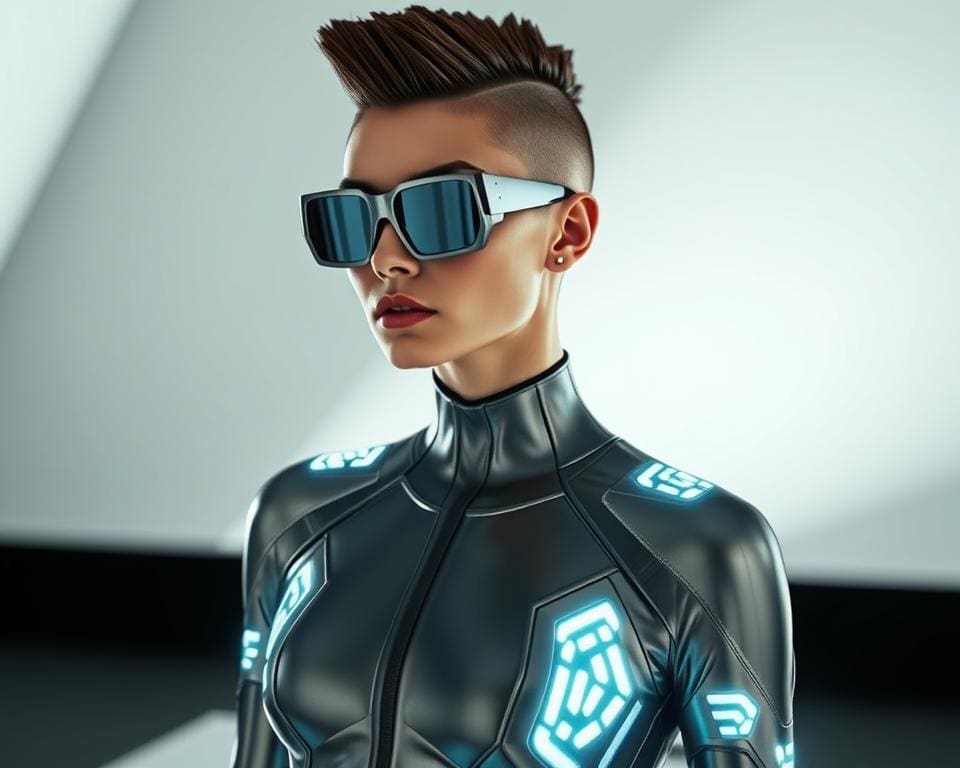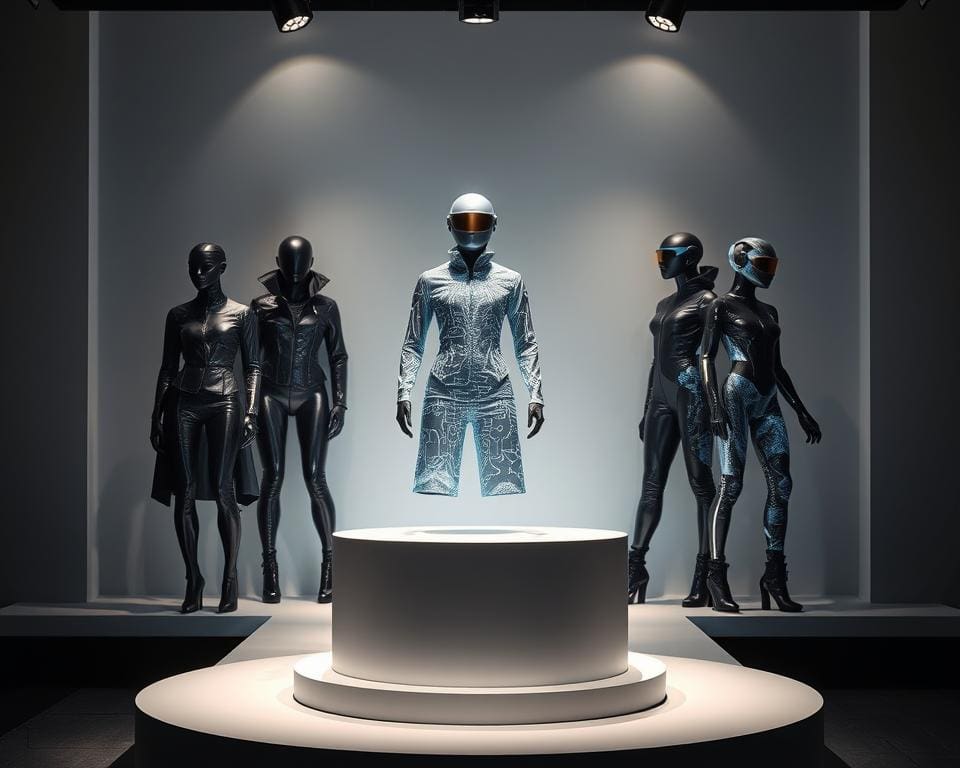Fashion tech, a vibrant fusion of traditional fashion and cutting-edge technology, represents an exciting evolution in the apparel industry. This innovative field encapsulates a multitude of advancements, from smart fabrics to wearable devices, and even digitally enhanced shopping experiences. Brands such as Stella McCartney and Adidas have taken the helm of this movement, showcasing how tech-infused fashion can revolutionise our wardrobes. As the integration of digital insights into physical products continues, we witness a transformation of conventional clothing into sophisticated garments that not only embody aesthetic appeal but also functionality. Embracing fashion technology is not merely a trend; it is a significant step towards a more innovative and sustainable future in fashion.
Understanding the Concept of Fashion Technology
Fashion technology encompasses a broad spectrum of innovations that redefine the way we interact with clothing and accessories. This dynamic field has witnessed significant growth, integrating advanced materials and digital solutions into everyday wear. The evolution of fashion tech illustrates how traditional styles can be enhanced through modern advancements, making garments not just items of clothing, but instruments of innovation.
The Evolution of Fashion Tech
The journey of fashion technology began with basic electronic accessories, gradually evolving into a sophisticated realm of possibilities. Designers and technologists have collaborated to create smart textiles capable of altering their properties in response to environmental stimuli. Innovations like these demonstrate remarkable fashion innovation, driving the industry towards an exciting future while responding to consumers’ ever-changing needs.
How Fashion Technology Merges Style and Functionality
Fashion technology harmoniously blends aesthetic appeal with practical usage. A notable example can be seen in the partnership between leading brands, resulting in wearable garments that measure athletes’ physiological data during events. This convergence of style and functionality highlights the potential of fashion technology to enhance the user experience while maintaining a visually striking appearance.

What Is Fashion Tech: An In-Depth Exploration
The world of fashion tech presents a fascinating blend where innovation fuses with artistry, creating transformative experiences for consumers and brands alike. This exploration into the intersection of fashion and technology unveils the multitude of ways in which these sectors synergise, fostering new possibilities that shape the future of industry practices.
The Intersection of Fashion and Technology
Understanding what is fashion tech requires delving into the profound ways in which technology enhances and revitalises the fashion landscape. Advancements in materials, manufacturing techniques, and design processes showcase the powerful relationship between these two domains. Innovations such as augmented reality fitting rooms and virtual fashion shows are redefining the consumer experience. This intersection of fashion and technology facilitates not only aesthetic improvements but also sustainable practices that cater to evolving customer preferences.
Significance of Fashion Innovation in Today’s Market
The significance of fashion innovation cannot be underestimated in today’s marketplace. As consumers become increasingly aware of environmental issues, brands like Patagonia and Nike leverage technological advancements to adopt sustainable methods. Techniques such as 3D printing reduce waste while enhancing design capabilities. The ability to analyse consumer data through AI-driven analytics allows for more tailored offerings, demonstrating adaptability in a fast-paced environment. Embracing these innovative strategies positions brands favourably, ensuring relevance and connection with a conscientious audience.
Wearable Tech: The Future of Fashion
Wearable tech represents a significant evolution in fashion, blending cutting-edge technology with personal style. As this innovative field continues to grow, brands are unveiling popular examples of wearable technology that not only enhance daily life but also revolutionise how consumers interact with fashion.
Popular Examples of Wearable Technology
Numerous devices have emerged as distinct markers of wearable tech. Smartwatches like the Apple Watch showcase how fashion and functionality can coexist, offering not just timekeeping but also health tracking and communication capabilities. Fitness trackers such as Fitbit cater to health-conscious individuals by monitoring physical activity and sleep patterns. Smart glasses, such as Google Glass, introduce a new dimension, integrating augmented reality into everyday experiences. These popular examples of wearable technology emphasise the rich possibilities within this sector, appealing to tech-savvy consumers who seek both uniqueness and practical benefits.
The Impact of Wearable Tech on Consumer Behaviour
The rise of wearable tech has transformed consumer behaviour significantly. Shoppers are now prioritising devices that provide data-driven insights and connectivity over traditional aesthetic considerations. This shift reflects a growing demand for products that do more than simply look good. Brands adopting this new consumer mindset are better positioned to capture the attention of an increasingly discerning audience. Such changes in purchasing patterns indicate that the relationship between technology and fashion is evolving, paving the way for more sophisticated designs that marry utility with style.
Smart Textiles and Connected Fashion
In the realm of fashion, smart textiles stand out as one of the most innovative advancements, revolutionising the way garments function and interact with their wearers. The integration of technology into fabrics creates endless possibilities for functionality and style, offering a bridge between aesthetic appeal and technical capability.
Types of Smart Textiles in Fashion
The landscape of smart textiles comprises various intriguing types that enhance the overall experience of connected fashion. Here are a few notable examples:
- Conductive fabrics that detect touch or heat, enabling dynamic interactions.
- Phase change materials that adapt their insulation properties based on temperature changes.
- Colour-changing textiles that transform under specific environmental conditions, offering unique visual appeal.
- Health-monitoring fabrics embedded with sensors that track physiological parameters.
Benefits of Connected Fashion for Wearers
Connected fashion presents numerous advantages that appeal to a tech-savvy audience. Wearers benefit from:
- Enhanced functionality, allowing garments to provide real-time data and applications.
- Increased comfort through customised fit and adaptive materials that respond to movement.
- Health-monitoring capabilities, enabling individuals to keep track of vital statistics seamlessly.
- Unique selling points for brands, fostering customer loyalty through innovation.
Current Fashion Tech Trends and Innovations
The landscape of fashion technology is rapidly evolving, with numerous fashion tech trends igniting a new wave of creativity and engagement. Virtual fitting rooms have emerged as a transformative tool, enabling consumers to try on garments through augmented reality applications without leaving their homes. This convenience not only enhances the shopping experience but also reflects a broader shift in retail strategies as brands adapt to the demands of a tech-savvy clientele.
Innovations in fashion technology are further exemplified by the rise of digital fashion, where brands like Balenciaga are pushing boundaries with virtual collections designed specifically for wearable avatars. These collections challenge traditional fashion norms and demonstrate the potential of digital garments in complementing physical outfits or standing alone as artistic expressions. In tandem, blockchain technology is revolutionising the luxury sector by improving traceability and authenticity, an essential aspect as consumers increasingly seek transparency in their purchases.
As these trends unfold, they promise not only to enrich consumer experience but also to pave the way for a more sustainable future in fashion. Emphasising innovation is crucial in a world grappling with climate change, as the integration of fashion tech trends aligns with the pressing need for responsible consumption and production practices. With each advancement in innovations in fashion technology, the potential to redefine the industry appears boundless, making this an exciting time for both brands and consumers alike.









